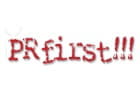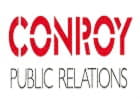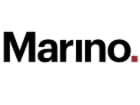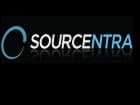Owning either of these large-cap biotech stocks has been a great way to get rich over the past decade. Shares of Celgene Corporation (NASDAQ:CELG) have quadrupled since 2007. Biogen Inc. (NASDAQ:BIIB) shareholders have seen their investment rise fivefold over the same time frame, before accounting for the Bioverativ spinoff earlier this year.
More recently, though, Biogen's returns have trailed Celgene's, and investors are right to wonder which is a better stock to buy at the moment. To answer this burning question, let's see how they stack up to each other.

IMAGE SOURCE: GETTY IMAGES.
The case for Biogen Inc.
Exploding sales for a string of expensive multiple sclerosis (MS) treatments made this one of the best performing biotech stocks of all time, but its dominance in this arena is fading fast. About 72% of all the revenue Biogen reported last year came from just three MS drugs -- Avonex, Tecfidera, and Tysabri. Unfortunately for Biogen, a recently launched drug from Roche called Ocrevus, and Celgene's experimental ozanimod, present major threats to all three of Biogen's top products.
Although Celgene won't even submit ozanimod's first applications to the Food and Drug Administration (FDA) until later this year, Ocrevus launched this April and already generated $196 million in sales by the end of June. Luckily for Biogen, Ocrevus is one of the several compounds Roche licensed from Biogen years ago. The company might lose top-line revenue as Ocrevus barrels toward peak annual sales expected to pass $5 billion, but a tiered royalty percentage that tops out at 24% will go a long way to offset Biogen's losses.
Total MS segment sales growth slowed to just 5% in the second quarter, but this year's successful launch of Spinraza is shifting Biogen's center of gravity away from the increasingly competitive field. Spinraza sales hit $203 million during the three months ended June, which was the drug's second full quarter since earning FDA approval.
Looking ahead, Biogen is developing what is arguably the most promising Alzheimer's candidate to enter late-stage clinical trials. Aducanumab thrilled investors with early-stage data that suggest it could become the world's best-selling drug. Unfortunately, Alzheimer's disease trials have a 99% failure rate, so we'll need to wait for the next readout before getting too excited about this program.

IMAGE SOURCE: GETTY IMAGES.
The case for Celgene
While Biogen's older blockbusters have all but flatlined, this company's flagship blood cancer drug Revlimid is on its way to becoming the world's best-selling cancer drug. Even though the drug launched 12 years ago, Celgene expects the multiple myeloma therapy to generate at least $8.0 billion in sales this year, a 15% increase over last year.
Revlimid launched in 2005, and generic competition should begin pressuring its sales growth in 2023. By then, though, follow-on multiple myeloma therapy Pomalyst, and the more recently launched psoriasis pill, Otezla, could more than offset the losses. In the first half of the year, combined sales of the pair grew 32%, to an annualized run rate of $2.7 billion.
While present-day products fly off pharmacy shelves in the present, potential new drugs emerging from Celgene's internal pipeline and through a myriad of external collaborations could drive growth for many years to come. The company has pivotal trial data in hand that should make ozanimod's upcoming submission to the FDA a slam dunk for approval -- and there's plenty more coming through the pipeline. The multiple sclerosis hopeful is just one of 10candidates in late-stage development that management thinks can eventually achieve $1 billion in annual sales.
Running the numbers
Biogen's drug sales might not grow as quickly as Celgene's in the years ahead, but that doesn't mean the stock can't deliver market-beating gains. Biogen stock can be scooped up at just 21.4 times trailing earnings, which is a relative bargain compared to the average stock in the S&P 500, which has been going for about 24.2 times trailing earnings.
BIIB PE RATIO (TTM) DATA BY YCHARTS.
As you can imagine, growth expectations for Celgene are much higher, and the stock looks terribly expensive at 43.1 times trailing earnings. However, shifting our focus from the rear view to the road ahead makes Celgene look relatively cheap at just 15.6 times 2018 earnings estimates.
On the same forward-looking yardstick, Biogen trades at a slightly lower multiple of 14.1 times 2018 estimates. Unless Biogen lands a shot on the moon with its Alzheimer's hopeful, Celgene's bottom line is poised to outpace its biotech peer by a wide margin in the years ahead. That makes it the better buy today, hands down.
Say Goodbye to the Old iPhone: This Could Be 40X BetteriPhone mania is back, and there's potentially billions up for grabs. But if you think Apple is the best way to play the pending iPhone tsunami, think again. One tiny company holds the patents to an invaluable, tiny component inside Apple's newest iPhone -- and Apple has to pay up every time it puts this technology in its phones.
Don't wait until the name of this company is on everyone's lips.















